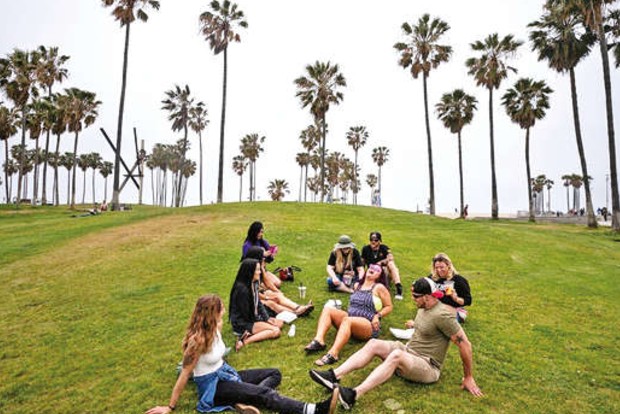Begin typing your search...
Placing a threshold on quantum of meaningful friendships
Just how many friends can one person have? In a 1993 study, Robin Dunbar, a British anthropologist, theorised that humans could have no more than about 150 meaningful relationships, a measure that became known as Dunbar’s number.

Chennai
But researchers at Stockholm University published a paper last week calling that number into question, finding that people could have far more friends if they put in the effort.
“We can learn thousands of digits of pi, and if we engage with lots of people, then we will become better at having relationships with lots of people,” said Johan Lind, an author of the study and an associate professor at Stockholm University. The paper was published in the journal Biology Letters. In his original research, Dr. Dunbar studied monkeys and apes and determined that the size of the neocortex, the part of the brain responsible for conscious thought, correlated with the size of the groups they lived among. The neocortex in humans is even larger, so he extrapolated that their ideal group size was, on average, 150. In the new study, Dr. Lind said he and his team used updated data sets and statistical methods and found that the size of the neocortex did not limit the number of connections people could maintain. Dunbar’s number, he said, “has been criticised for quite a long time.”
Dr. Lind’s team found that no maximum number of friendships could be established with any precision. Dr. Dunbar defines meaningful relationships as those people you know well enough to greet without feeling awkward if you ran into them in an airport lounge. That number typically ranges from 100 to 250, with the average around 150, he said. At birth, it starts at one or two. Friendships peak in the late teens and early 20s. By their 30s, people tend to have about 150 connections, and that number remains flat until people reach their late 60s and early 70s, when their number of connections, Dr. Dunbar said, “starts to plummet.” “If you live long enough, it gets back to one or two.”
In his book “How Many Friends Does One Person Need,” Dr. Dunbar pointed to historical and modern-day examples to back up his research. Around 6000 B.C., the size of Neolithic villages from the Middle East was 120 to 150 people, judging by the number of dwellings. In 1086, the average size of most English villages recorded in the Domesday Book was 160 people. In modern armies, fighting units contain an average of 130 to 150 people, he said.
While it may be comforting to think that there is an optimal number of people with whom we should surround ourselves, in reality there is not one rule that applies to all of us, said Louise Barrett, a psychology professor at the University of Lethbridge in Canada. “Human life is really complicated,” she said. Dr. Barrett, a biological anthropologist who was not involved in the new study and who previously studied under Dr. Dunbar, said the analysis looked robust. “We need to rethink and adjust our interpretation and hypotheses in light of this new data,” she said.
The debate over relationships comes as people are rethinking which friendships they want to recultivate after the pandemic shrank social circles and as businesses are designing post-pandemic work spaces. What will the pandemic mean for rebuilding meaningful connections, whether at work or in our social lives? Dr. Dunbar predicted that the biggest effects on networks would be on older people. “Their friendship circles were already declining and this will push them further down that slope,” he said.
Gross is a journalist with NYT©2021
The New York Times
Visit news.dtnext.in to explore our interactive epaper!
Download the DT Next app for more exciting features!
Click here for iOS
Click here for Android
Next Story



